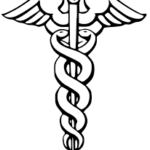
for Health symbol
| Symbol | for Health |
| Religion | Various cultural contexts |
| Origin | The origin of the health symbol can vary, rooted in ancient traditions or emerging from modern interpretations. |
| Meaning | Typically, it signifies well-being, vitality, and the balance of mind, body, and spirit. |
| Appearance | The symbol's design may include elements like leaves, serpents, or other imagery associated with healing and health. |
| Colors | Colors often hold significance; for example, green may represent growth and life, while blue can symbolize calmness and tranquility. |
| Usage | Found in religious rituals, medical contexts, and wellness practices, the symbol is utilized for invoking health and healing. |
| History | tracing the symbol's historical evolution provides insights into its cultural significance and relevance over time. |
| Popularity | The symbol's prevalence and recognition across different cultures and communities. |
| Importance | Importance: The role the symbol plays in promoting well-being, both spiritually and physically. |
| Complexity | The intricate details or layers of meaning embedded in the symbol, revealing its depth. |
| Emotions | Conveying a sense of comfort, hope, and positive emotions associated with health. |
Health Symbols: A Universal Language of Healing
Health symbols transcend spoken languages and cultures, conveying powerful messages of well-being, medicine, and care. From ancient times to modern day, these visual representations have served as:
- Identification: Signaling medical facilities, professionals, and organizations.
- Communication: Simplifying complex medical concepts for easy understanding.
- Reassurance: Offering comfort and hope to patients and their loved ones.
Some of the most iconic health symbols include:
- The Rod of Asclepius: An ancient Greek symbol featuring a staff entwined with a single snake, representing healing and rejuvenation.
- The Caduceus: Often mistaken for the Rod of Asclepius, it depicts two snakes twining around a winged staff,historically associated with the god Hermes and commerce.
- The Red Cross and Red Crescent: Recognized emblems of medical neutrality and humanitarian aid, protecting healthcare providers and patients in conflict zones.
- The Heart: A universal symbol of love, life, and good health.
Beyond these, countless other symbols represent specific medical disciplines, conditions, and organizations. From the pink ribbon for breast cancer awareness to the wheelchair symbol for accessibility, these icons play a vital role in promoting health literacy and fostering a global community of healing.